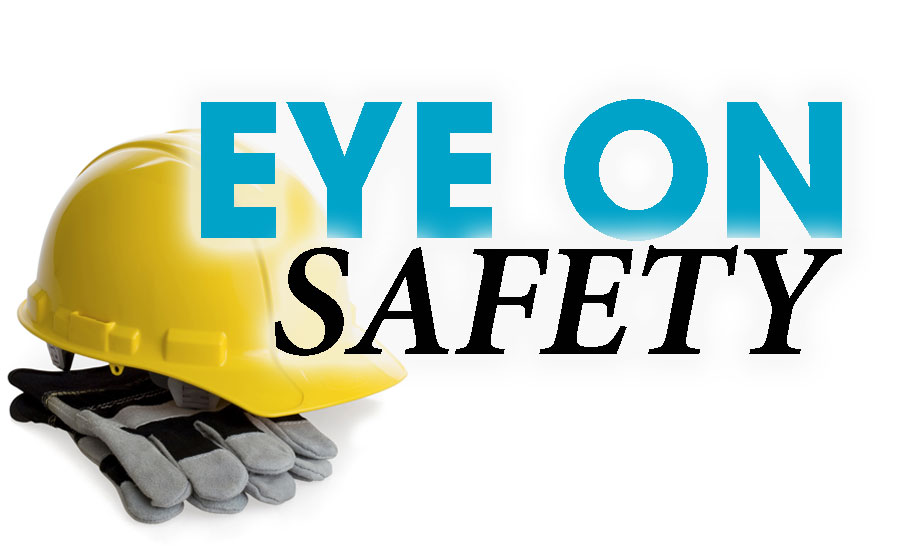Eye on safety: Holistic safety

Despite our best intentions, safety professionals focus sharply on compliance. Our attention locks on the hundreds of regulatory pages promulgated by OSHA, DOT, EPA, etc., as we decipher the necessary steps to stay out of trouble.
This approach gets the job done, but we silo ourselves. We are so consumed by the task of avoiding citations, complaints and costly fines that we don’t consider a bigger picture: is a physically fit employee a safer employee? Is a calm employee a safer employee? Is an employee actively working on a promotion a safer employee? Is an employee who communicates well a safer employee? Is an employee who feels a sense of camaraderie a safer employee?
The Forbes’ Coaches Council and other reputable players in the employee wellbeing game would answer a resounding, yes! They claim wellbeing programs bolster employee engagement, cohesiveness and overall productivity.
Gallup research indicates employees who report a high level of wellbeing are 36% more likely to report a full recovery after an illness, injury or hardship and miss 41% less work as a result of poor health. These statistics equate to a savings of $1.6 million per employee per year.
Accordingly, there is a growing trend in human-resource departments to broaden wellness programs beyond physical wellness. Mental, financial and career wellbeing programs are popping up frequently. The Coaches Council recently published a list of 14 employee wellbeing initiatives to consider. Here is that Forbes list.
Onsite fitness programs: Sit-stand desks, a yoga room with guided classes, a treadmill and group walks over lunch are examples.
Flexible working arrangements: The option to work from home one day a week, shorter work days, flexible work hours, personal time off as a reward for participating in wellness programs, paid parental leave and onsite childcare are examples here.
Mindfulness training: A meditation application on company phones, guided meditation or yoga classes, a soothing mindfulness room, dim lights, soft music, pillows on the floor, aromatherapy and a mindfulness tip in the company newsletter are examples.
New/working parent career coaching: Demonstrate a commitment to work/life balance by offering parent coaching services. Forbes recommends “Life Meets Work.”
Financial education: Retirement seminars are fairly commonplace these days, but other stages of life present financial stress. How about seminars on student loans, family budgets, home buying vs. renting, saving for children’s college, preparing for assisted-living or nursing-home expenses.
Emotional intelligence developmental training: EQ is the new IQ. Research indicates the stronger an employee’s emotional quotient — self-awareness, self-regulation, motivation, empathy and social skills – the more likely they will perform well at work and succeed in leadership positions.
Improv training: Laughter in the workplace is a good thing, but improv training will teach the brain how to listen actively, collaborate and take risks. It will increase confidence and sales, and improve public speaking and conflict-resolution skills.
Access to healthy food: Fill the breakroom with organic foods. Invite a farmer’s market to your parking lot in the summer. Host cooking classes and health-themed potlucks. Include healthy recipes in the company newsletter.
Snooze-friendly policies: Encourage employees to take 20-minute naps every day — at their desk, in their car, or in a cozy, designated room.
On-the-hour flash walk: Play a nonintrusive chime over the loudspeaker every hour, once a day, or once a week. Encourage employees to stop what they’re doing and stretch their legs. Post a graphic in a few spots throughout the facility. Employees will walk to a graphic and then return to their workstations.
Practice gratitude: Say thank you; in person, in an email or in a company newsletter. Express your appreciation. Tell your coworkers that you recognize their efforts. Experts assure us that they and you will feel less lonely, build a stronger immune
system, improve emotional equilibrium, sleep better, feel more energetic and confident, relax more easily, be more resilient and produce more creatively.
Deep sense of purpose and contribution: Take an afternoon with employees to sort food at a food bank, build a playground, weed a nursing home garden or walk dogs at a local shelter.
Incentive-based trips: Take high-performing employees on a cruise! Or, on a smaller scale, a weekend getaway to a concert, a festival, a hunting lodge, a spa, a bed and breakfast or the theater.
I encourage safety professionals to step out of the compliance silo and engage with their company’s well-being programs.
Looking for a reprint of this article?
From high-res PDFs to custom plaques, order your copy today!







